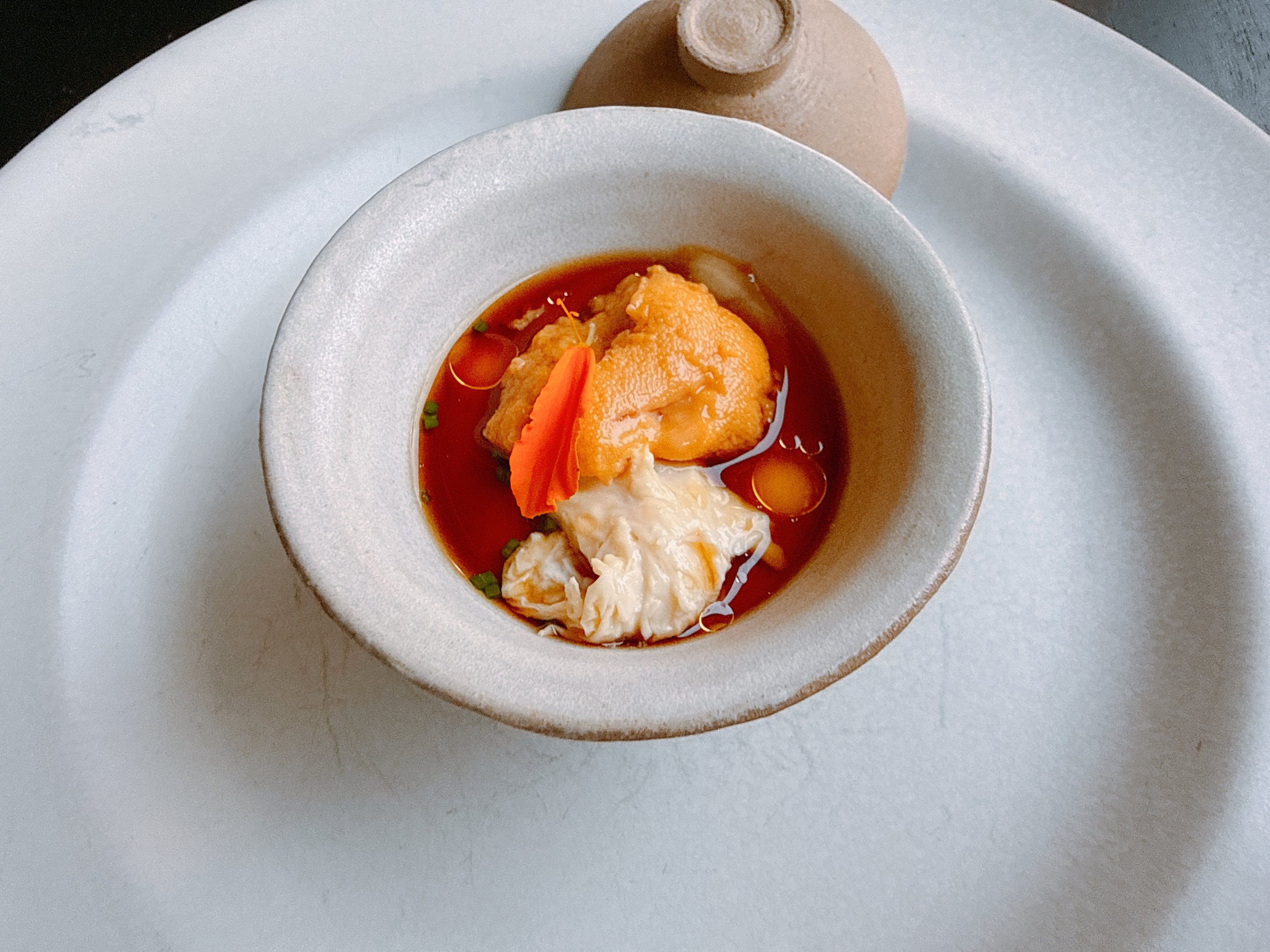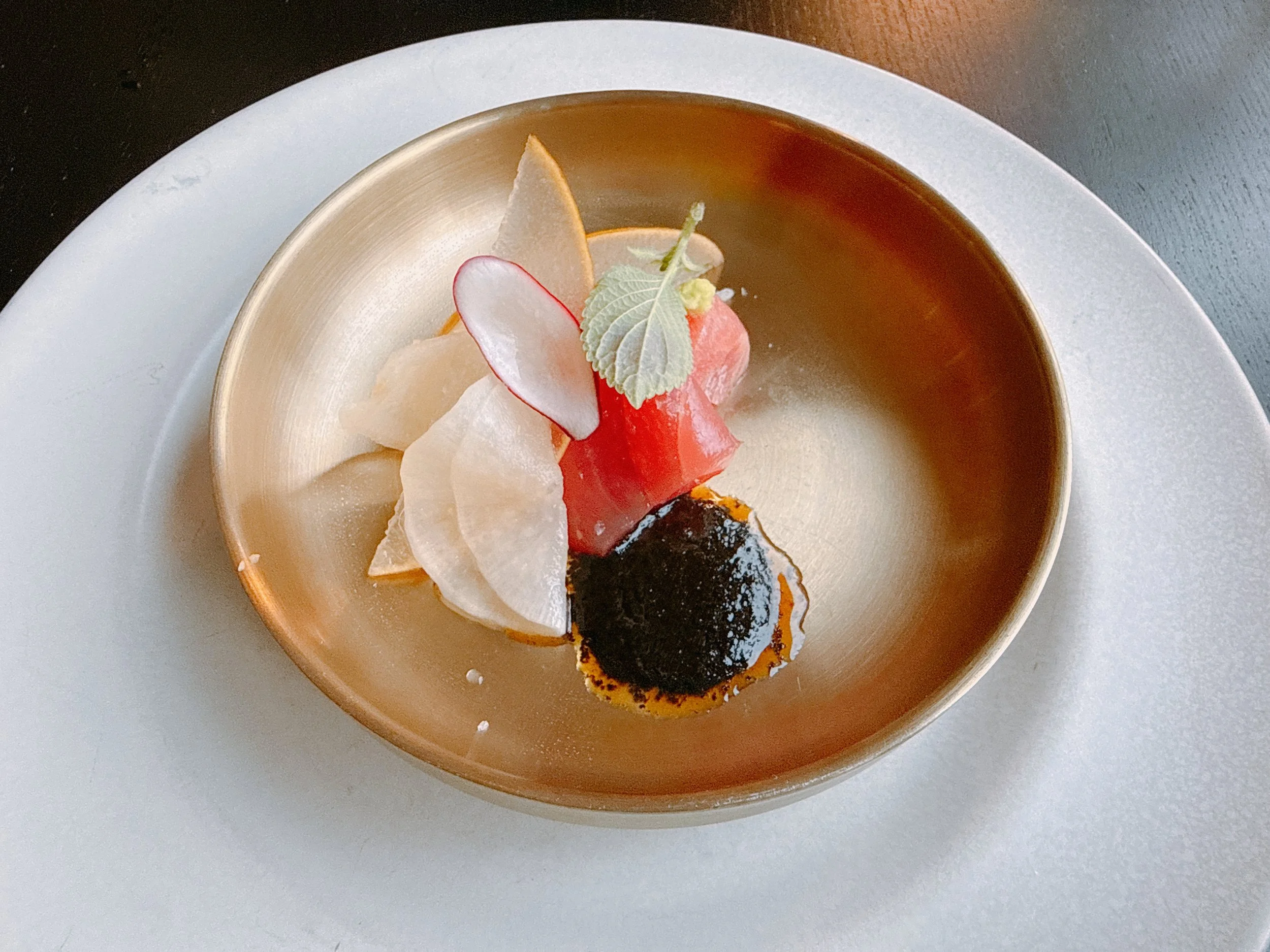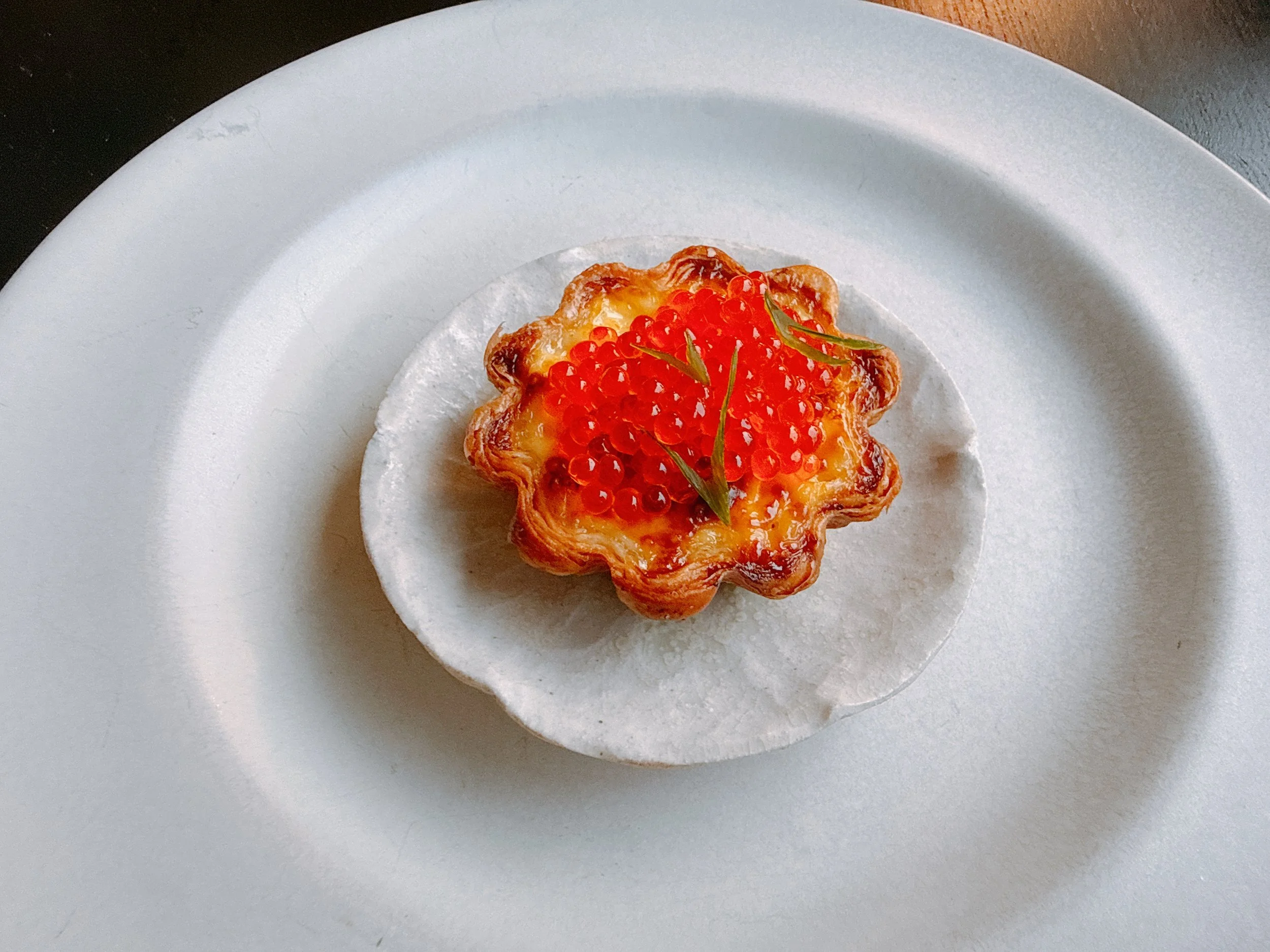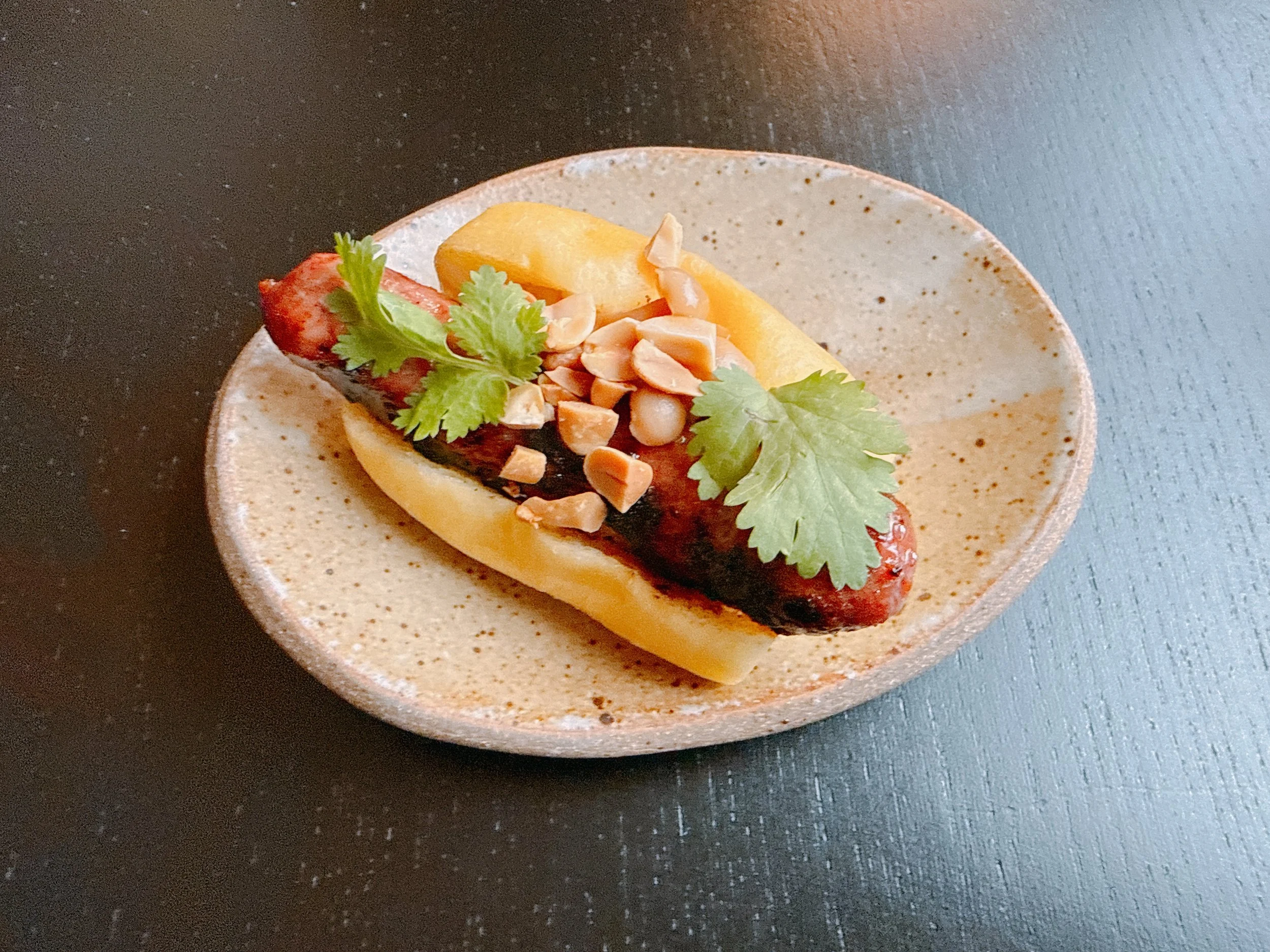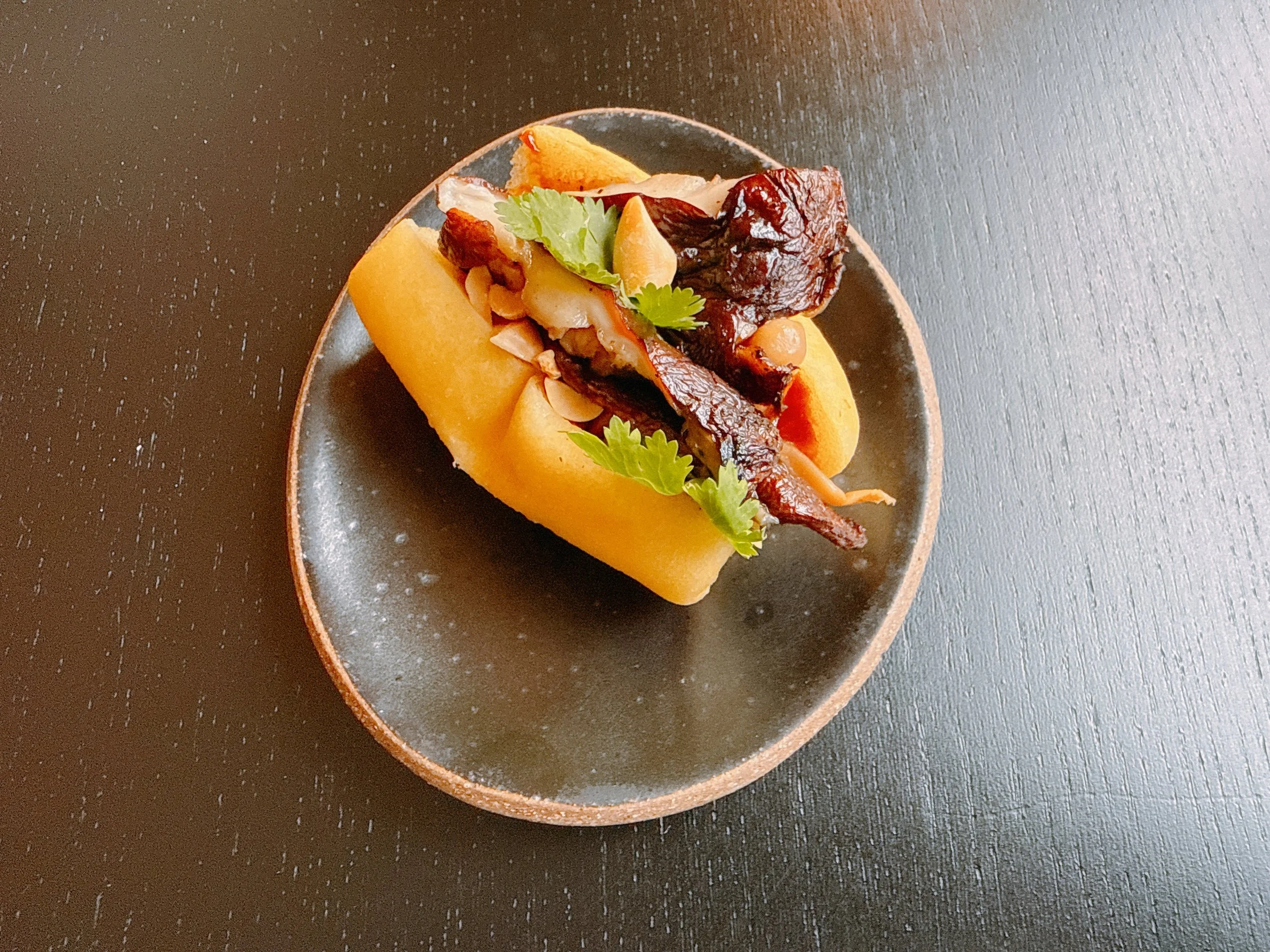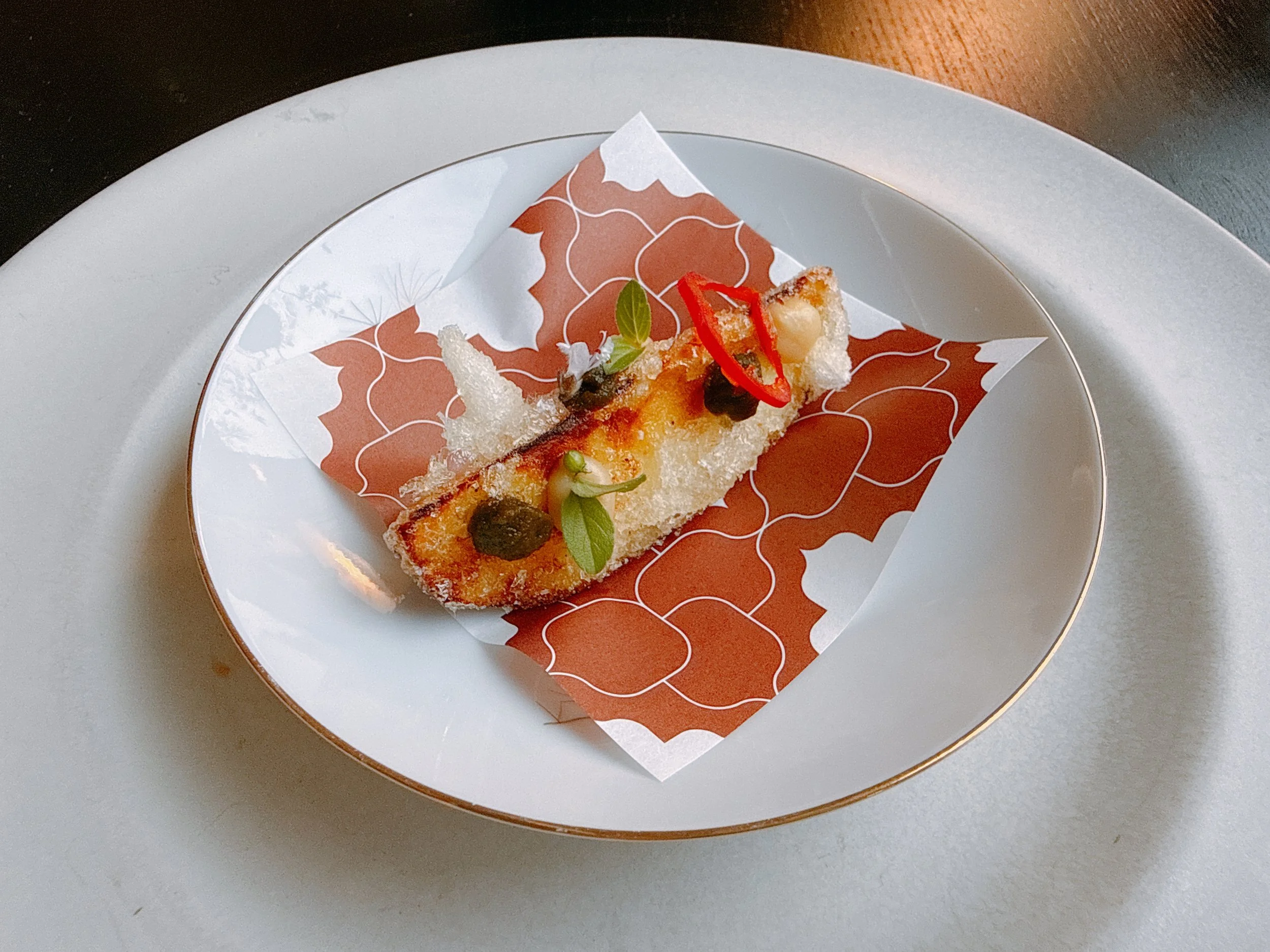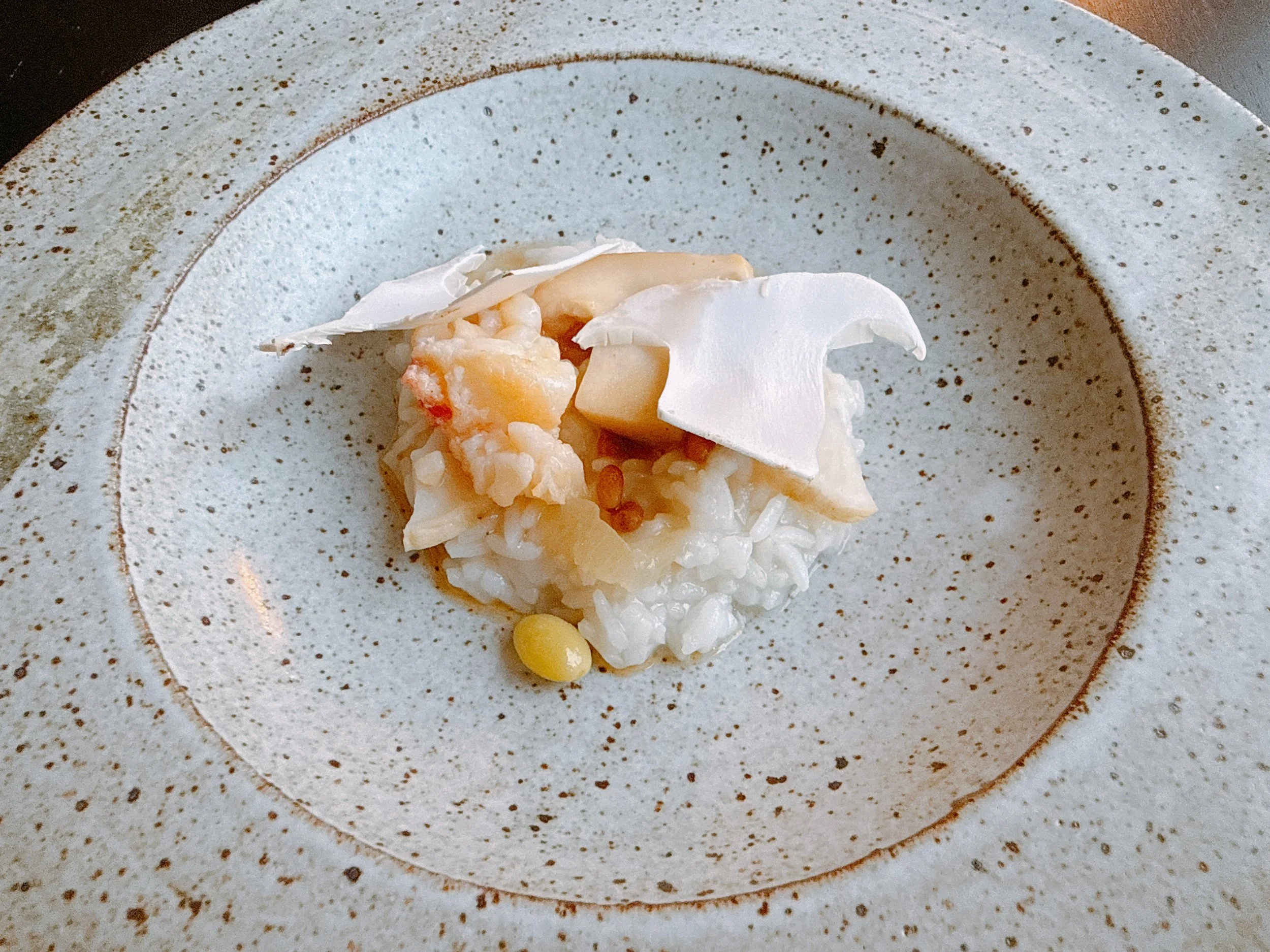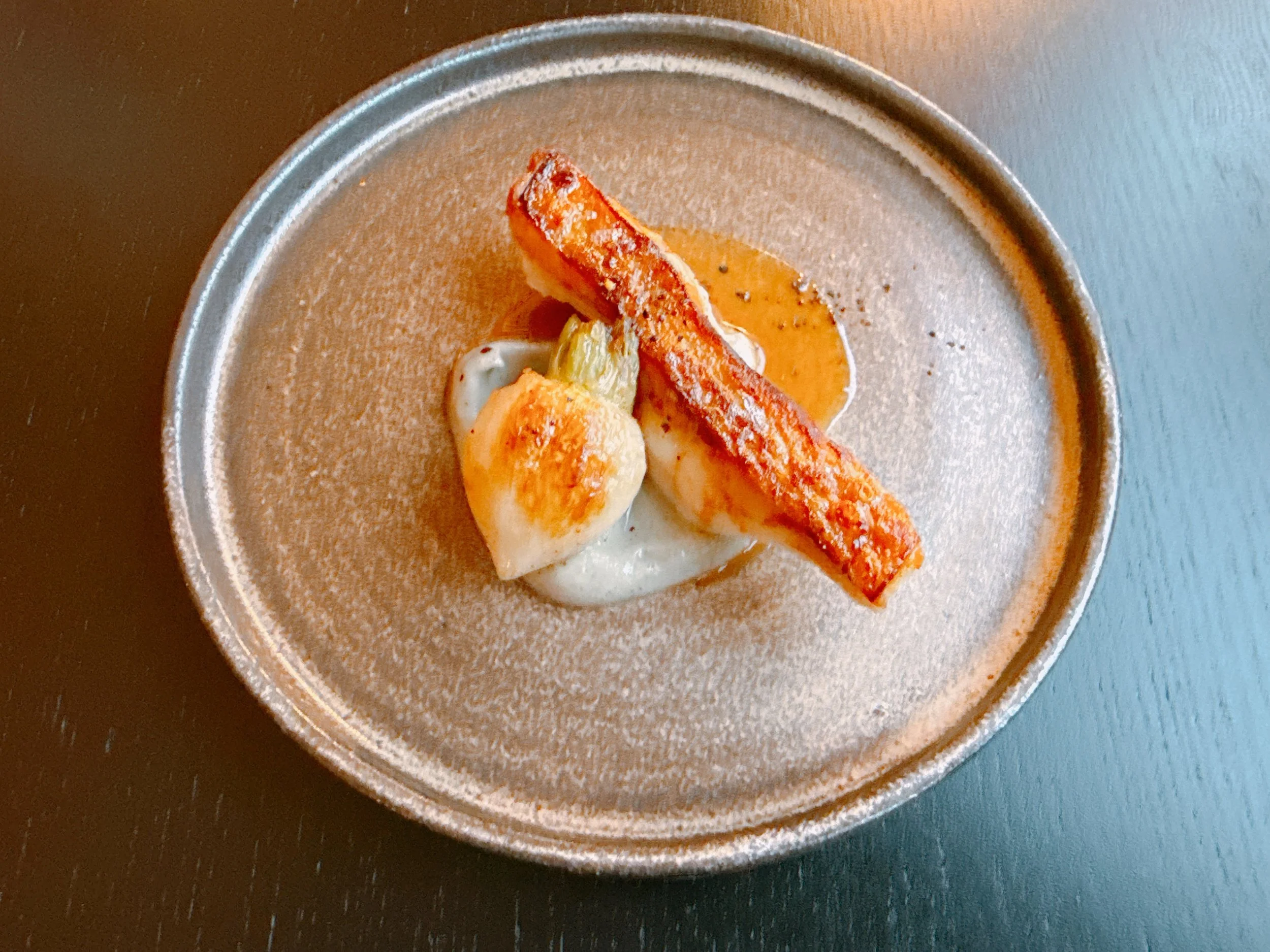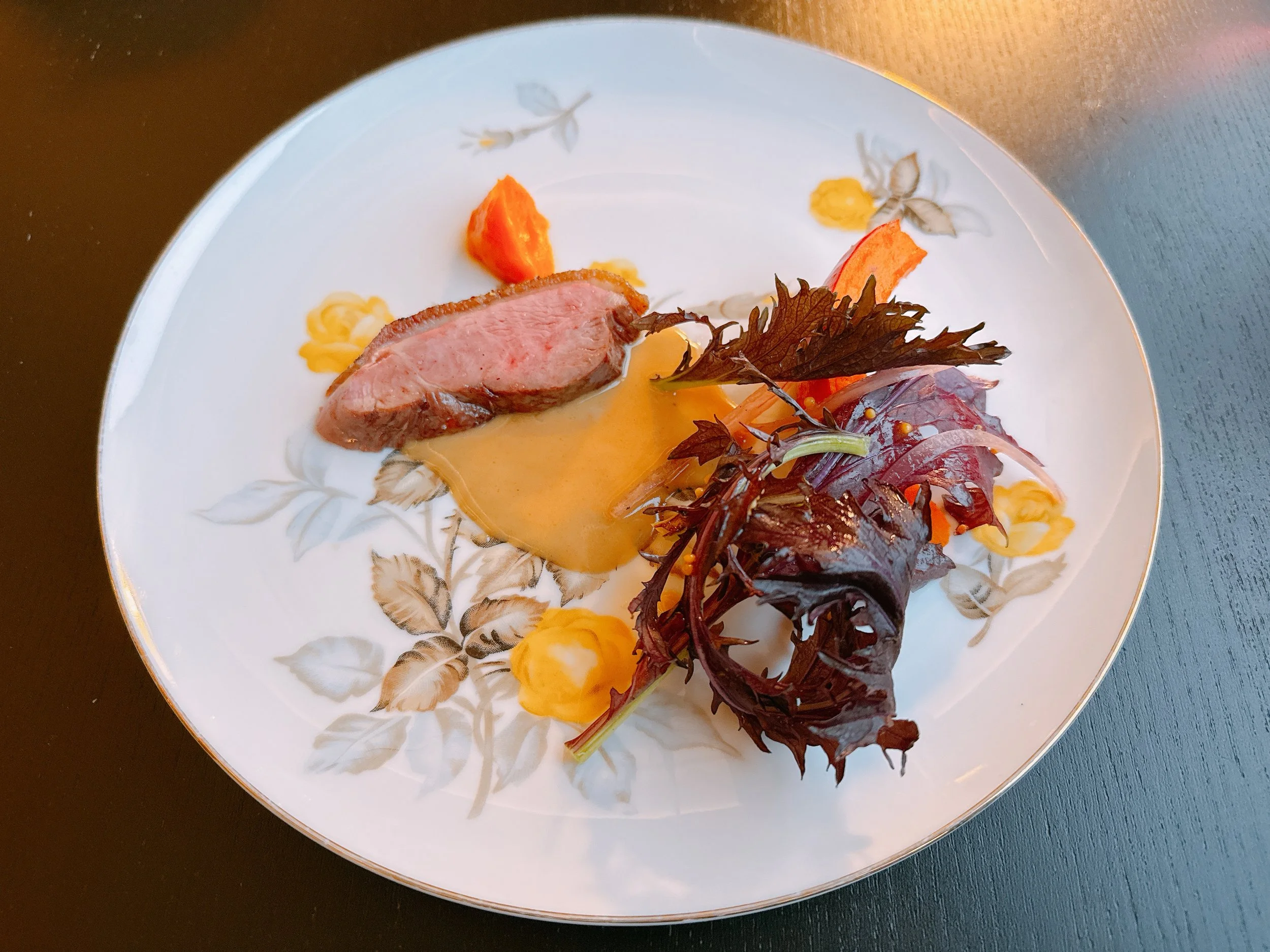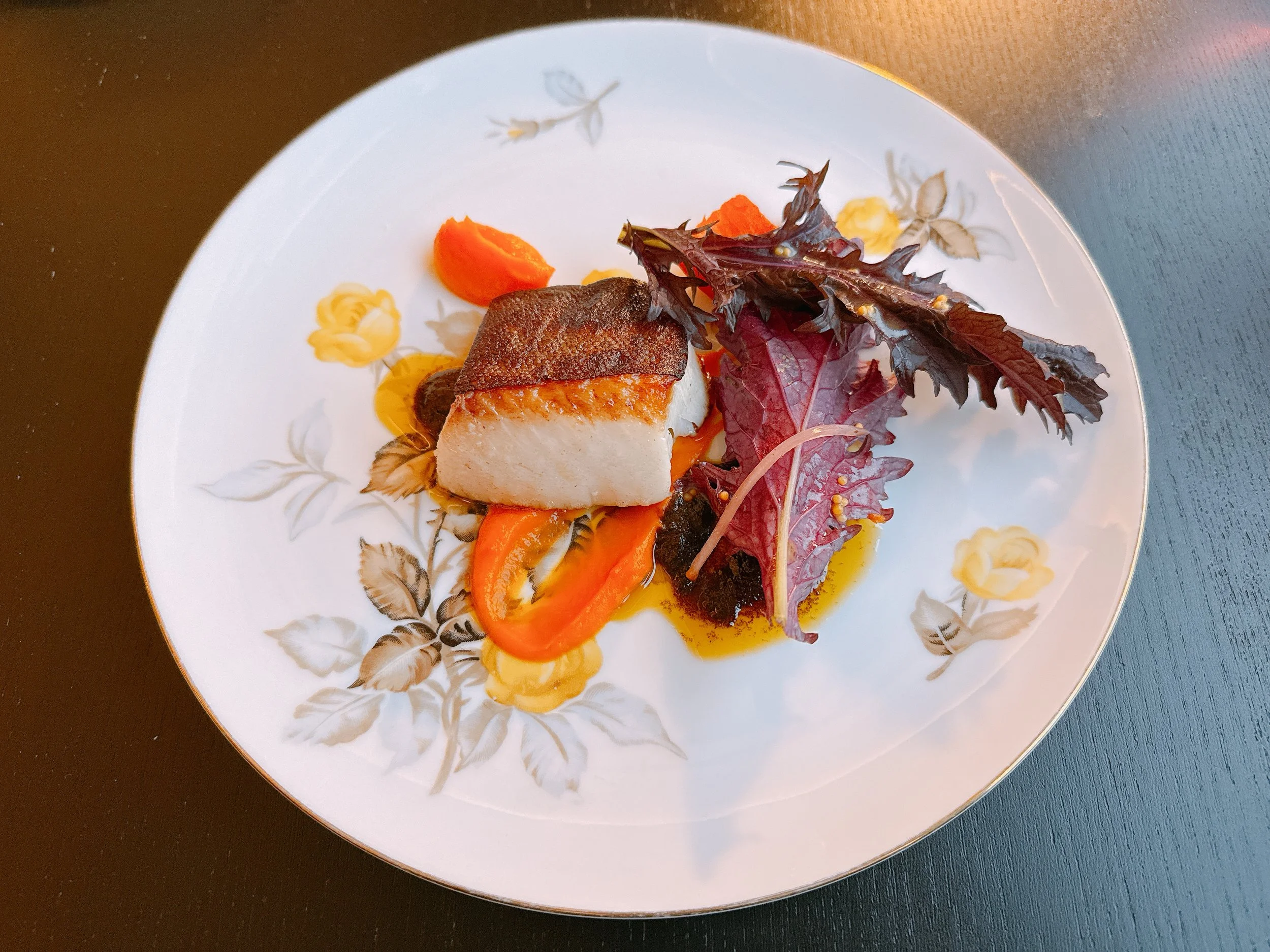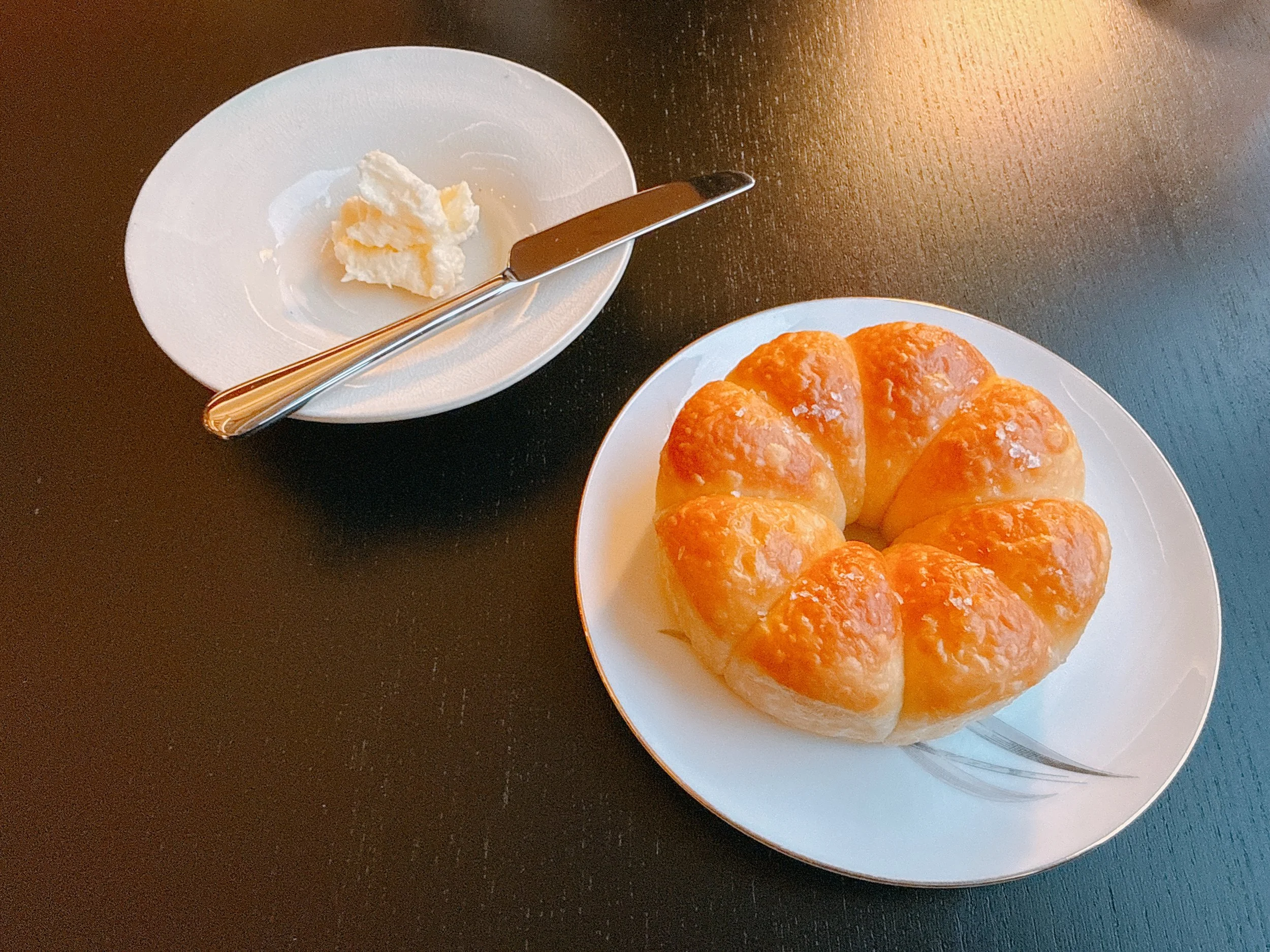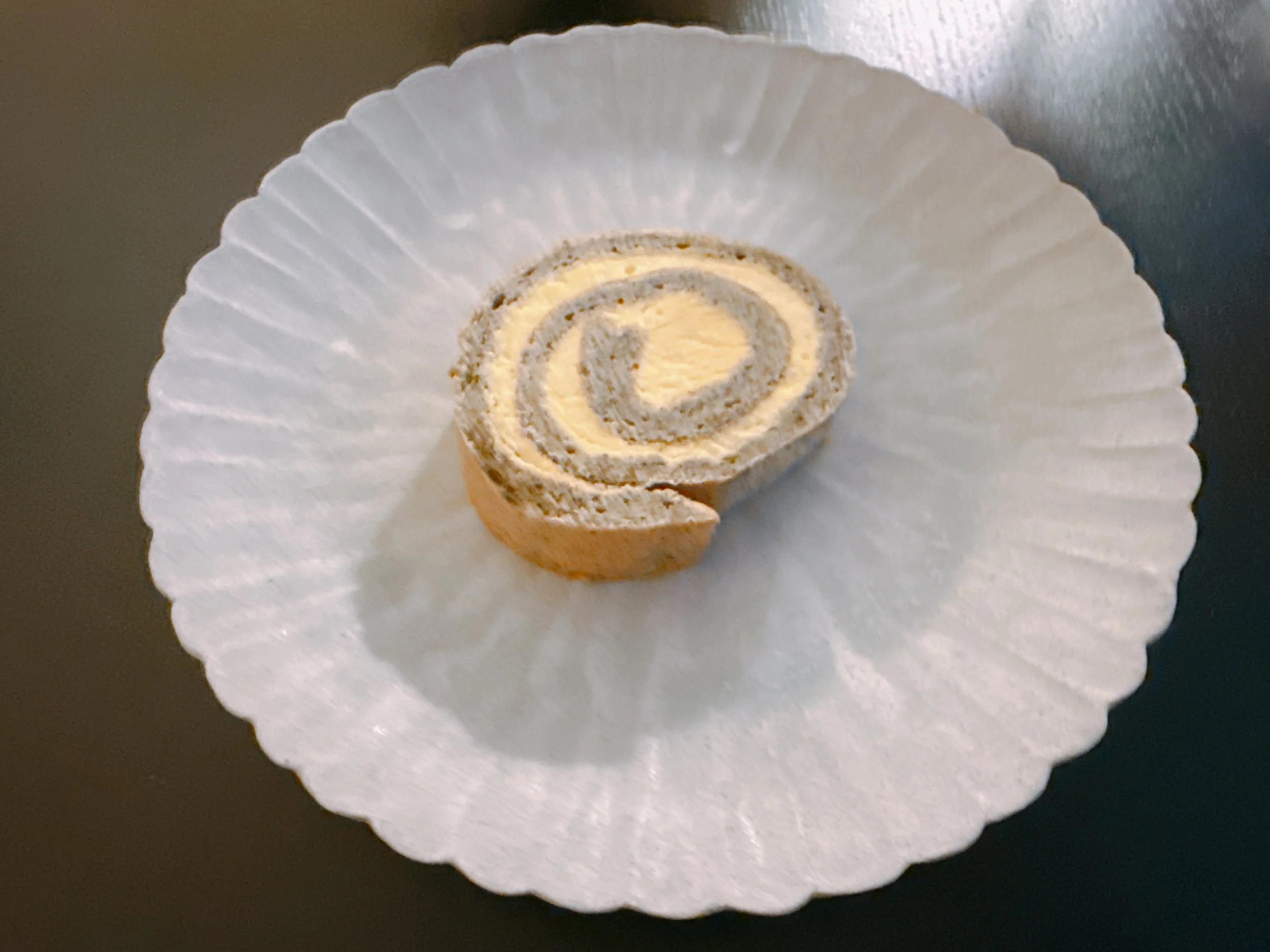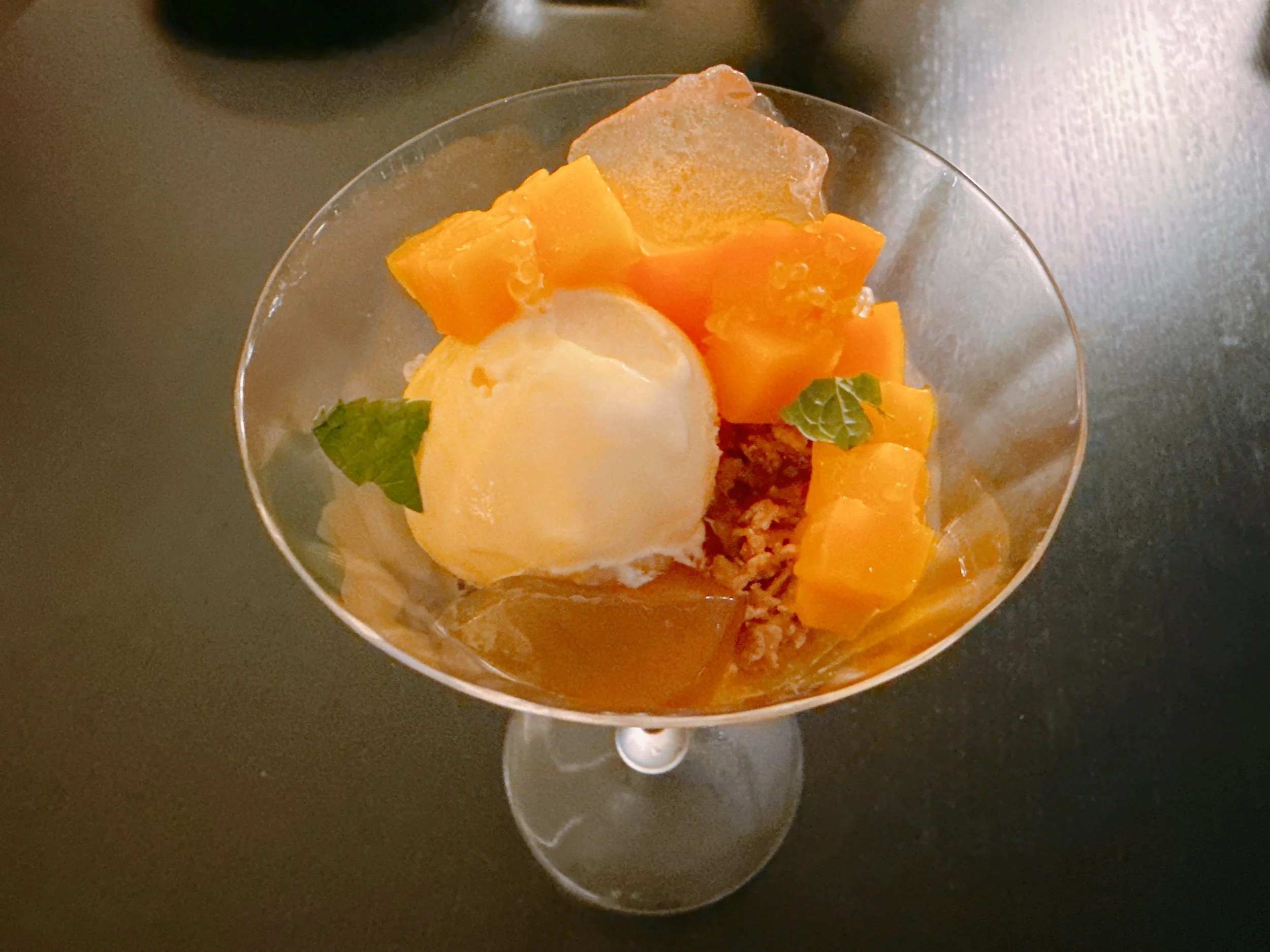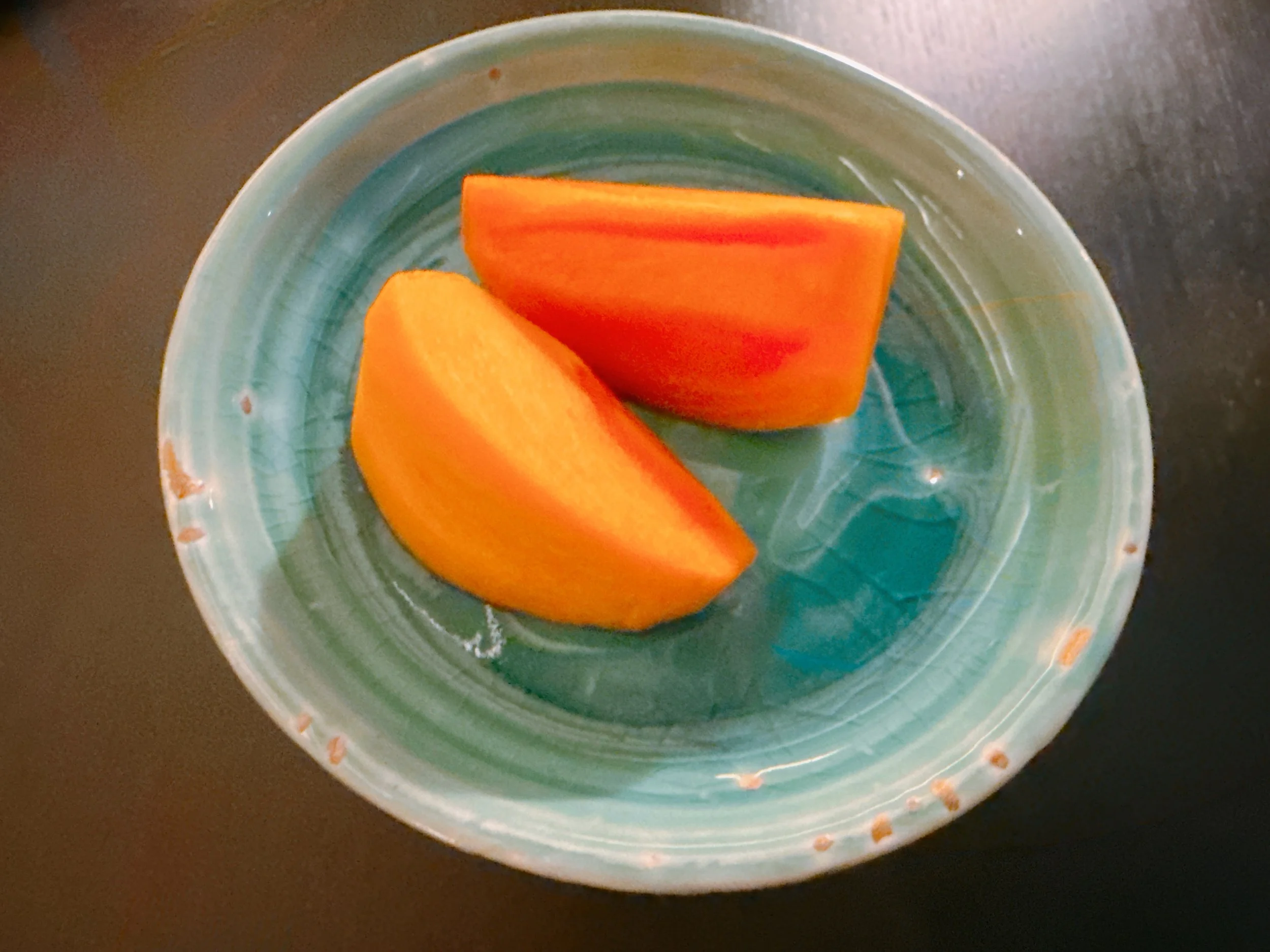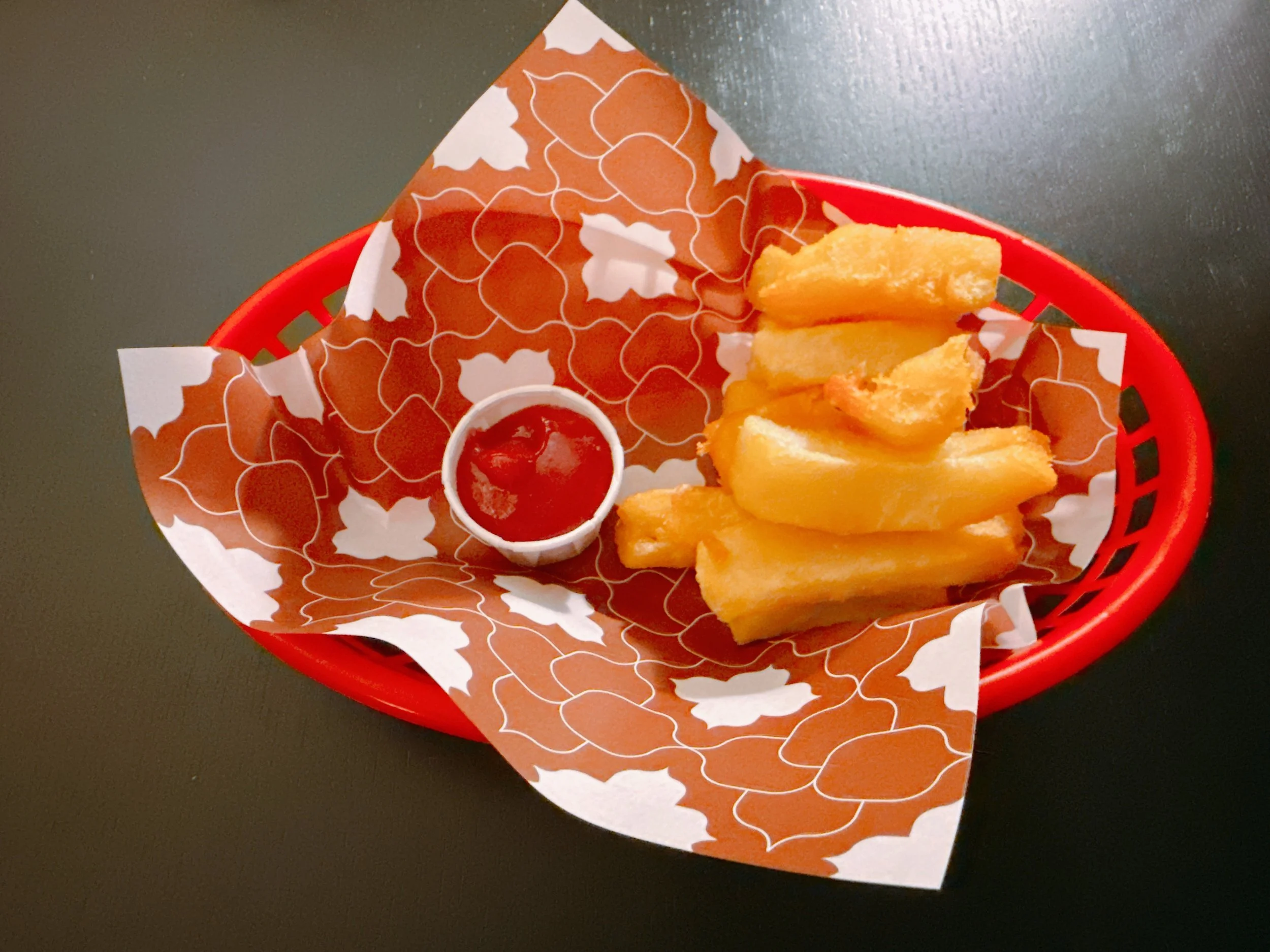Sun Moon Studio - Oakland
Rating: 15/20
Where: Oakland, CA
When: Dinner for 2 on 26 October 2025
Cost per Person: Tasting menu $180, Wine pairing $100
Accolades: 1 Michelin Star
Why: Asian-influenced, seasonal Californian cuisine
Oakland's “Sun Moon Studio” is one of the Bay Area's hottest restaurants right now. No wonder, since it has received accolades from near and far: the San Francisco Chronicle called it the best restaurant to open in the Bay Area in 2024, the New York Times deemed it one of the 50 best restaurants in the country, and Michelin awarded it a star in June, less than a year after opening. Eating here requires advance planning, nimble fingers, and some luck: exactly six weeks ahead at noon California time, one has maybe a couple of seconds to grab a reservation on Opentable. There is actually another reason why reservations are so difficult to get: the restaurant is tiny, having a mere four tables. Even with two seatings (one on Sundays), at most 24 people per day get a chance to sample the restaurant’s Californian cuisine with Asian (Taiwanese?) influences.
Sun Moon Studio is located in an industrial neighborhood of Oakland, and the dining room occupies a space that could easily have housed a repair shop or a small industrial kitchen. The odd B2C among all the B2Bs in the neighborhood, then (to use the Silicon Valley vernacular). Against all odds, there were some attempted walk-ins during our dinner, but generally one would not expect much foot traffic here.
The interior of the restaurant was notable for its extremely high ceilings, decorated with large white hanging cloths. The windows were actually part of a rolling garage door, and the wooden tables were nicely spaced out in the dining room.
There was just a single tasting menu, and given the small size of the operations, dietary restrictions had to be communicated well ahead of time. On the day of our visit, it was the restaurant's 200th service, proudly printed in the top-right corner of the menu (see below). A beverage pairing was available for $100, and consisted of four wines and one sake that were solid, but not exceptional. For a comparable price, one could also have ordered from the almost twenty offerings by the glass, ending up with somewhat larger pours.
We quickly noticed that the restaurant’s service was extremely efficient. Cutlery (for the most part) didn't get replaced between courses, presumably mirroring the Asian custom of not changing chopsticks. And the courses arrived in very quick succession, making our eleven-course dinner last only one hour and forty minutes. No wonder that we felt quite full at the end, even though the total amount of food was not unusually large by tasting menu standards.
The first course was based on tofu, produced by an Oakland company called Hodo. The tofu appeared both in its “regular” variety and as yuba (tofu skin). It came with a shaoxing wine glaze, a slice of ginger and some uni (sea urchin) from Santa Barbara. The dish was served cold, and the tofu tasted fresh with a hint of nuttiness. The sauce added a hint of sweetness, and the uni was quite nice as well. Only the slice of marinated ginger confused me a bit - it was edible, despite a texture that might suggest the opposite. Still, a great beginning to our meal 16.
Next, we received a serving of blue fin tuna sashimi, coming with a nori seaweed vinaigrette and slices of marinated daikon, a raw radish and Asian pears. The fish was topped with a small dollop of wasabi and a perilla leaf. The fish was lovely when paired with the sauce (by itself, it might have been less exciting). The sauce added saltiness and a fermented flavor to the dish. The marinated daikon and raw radish were nice enough, but the oddly sweet Asian pear felt like belonged to a different dish - or maybe it was simply meant as a palate cleanser between bites 17.
The next few bites were billed as “finger food” - essentially elevated versions of street food. First, we tried an egg tart that (unusually) was savory instead of sweet. Its egg custard filling contained dashi, and the tart was topped with trout roe. To be honest, the filling still had a hint of sweetness, so that it was really the salty roe with its associated texture that made this a savory dish. The tart's crust was lovely and very flaky, and the filling was not particularly eggy. It probably would have been utterly amazing straight from the oven, but - in deference to the trout roe - was served at room temperature. More rustic than the previous courses, but quite nice 16.
Along with the egg tart came a steamed brioche filled with a Taiwanese-style sausage and chopped peanuts. The sausage was not only the first warm bite of our meal, but also quite flavorful. Less excitingly, the brioche didn't taste of much and had a very doughy texture 16. The pescatarian version of this dish replaced the sausage with shiitake mushrooms. The mushrooms were marinated and came with a bit of sauce - not bad, but unfortunately not as flavorful as the original version of the dish 15.
The last serving of “finger food” was a salt-and-pepper fried sweet potato, topped with dollops of pasilla pepper puree and garlic puree, as well as pickled chilies and coriander. The potato was crunchy on the outside and creamy and sweet-ish on the inside - the result of a great frying technique. The toppings added only hints of flavors 15.
The next course featured California grown rice. It came with matsutake mushrooms (raw and cooked), ginkgo nuts and spiny lobster. The texture of the rice was curious: it was neither sticky (as in typical Asian cuisine), nor creamy (as in a risotto), but instead a bit brothy. So a spoon rather than chopsticks was the utensil of choice here. Overall, the dish was flavored lightly. The lobster was slightly sweet, the mushrooms crunchy with a notable bite. I could have done without the very sour citrus wedges in the rice, though. A perfect dish for autumn (well, at least for the proverbial autumn, and not the Bay Area's considerably warmer version) 15.
The following filet of rockfish was served with a butter sauce, an eggplant puree, a Tokyo turnip and a seasoning of maqaw berry. The fish's crunchy skin was lovely, and the rest of the filet was cooked nicely as well. The turnip was excellent: juicy and brothy. The eggplant added a bit of smokiness to the dish, but I couldn't really make out the maqaw berries (though I was probably hamstrung by the fact that I didn't really know what to look for...) 15.
The meal's final savory course was a dry-aged and charcoal-grilled duck, served with garlic honey, red curry squash, some salad leaves and pickled red onions. The duck had a nicely crunchy skin, and was pretty good - but I'm admittedly not much of a duck fan, so please take my opinions with a grain of salt. The squash puree was served cold (strangely enough), and the squash itself was only lukewarm. The salad leaves were somewhat unwieldy to eat - a smarter person than me would probably have cut them into smaller pieces. However, they managed to lightened up the dish a bit 15. (For duck aficionados, the score might be higher.) The pescatarian replacement of this dish featured a black cod filet accompanied by a nori-butter sauce. The fish was cooked wonderfully: flaky and buttery, it went great with the sauce. Yum 17. Together with main course, we received a ring of a pull-apart dinner rolls and some butter. The little rolls had nicely crunchy tops and an almost creamy interior 16.
Three different desserts arrived at the same time. A black sesame roll cake was filled with a passion fruit cream. This cream was lovely, but the cake itself felt oddly dry 14. The next dessert had many different components: a mango sorbet, a milk ice cream, chia seeds, finger limes and a chrysanthemum jelly. Together, they made for a nice combination: there was a granola-like texture, the mango was sweet, and the ice cream conversely not too sweet 16.
Finally, we had some wedges of giant fuyu persimmons. They had a good, lightly creamy consistency, but didn't seem very sweet after the previous two offerings. It probably would have been a smarter move to eat them first among the three desserts 15.
Unexpectedly, we were served one final dish: French fries with ketchup, of all things. Maybe this was a continuation of the street food theme, akin to grabbing a snack on the way home from a (not quite filling) fine dining meal? The potatoes were again fried very nicely: quite thick and very crunchy with a creamy center. Was this Michelin-star-level food? Maybe not, but nevertheless it was quite tasty - we were already pretty full, and still managed to disappear the fries in no time 14.
Overall: An enjoyable dinner that married seasonal California cuisine with Asian influences. The dishes were imaginative while remaining to the point, avoiding any unnecessary complexity. And, more importantly, they were all quite tasty. What’s not to like, then? Well, the service was a bit too fast, and none of the dishes were truly mind-blowing. But I'd definitely be happy to return during a different season to see what the kitchen does with the then current produce 15.

